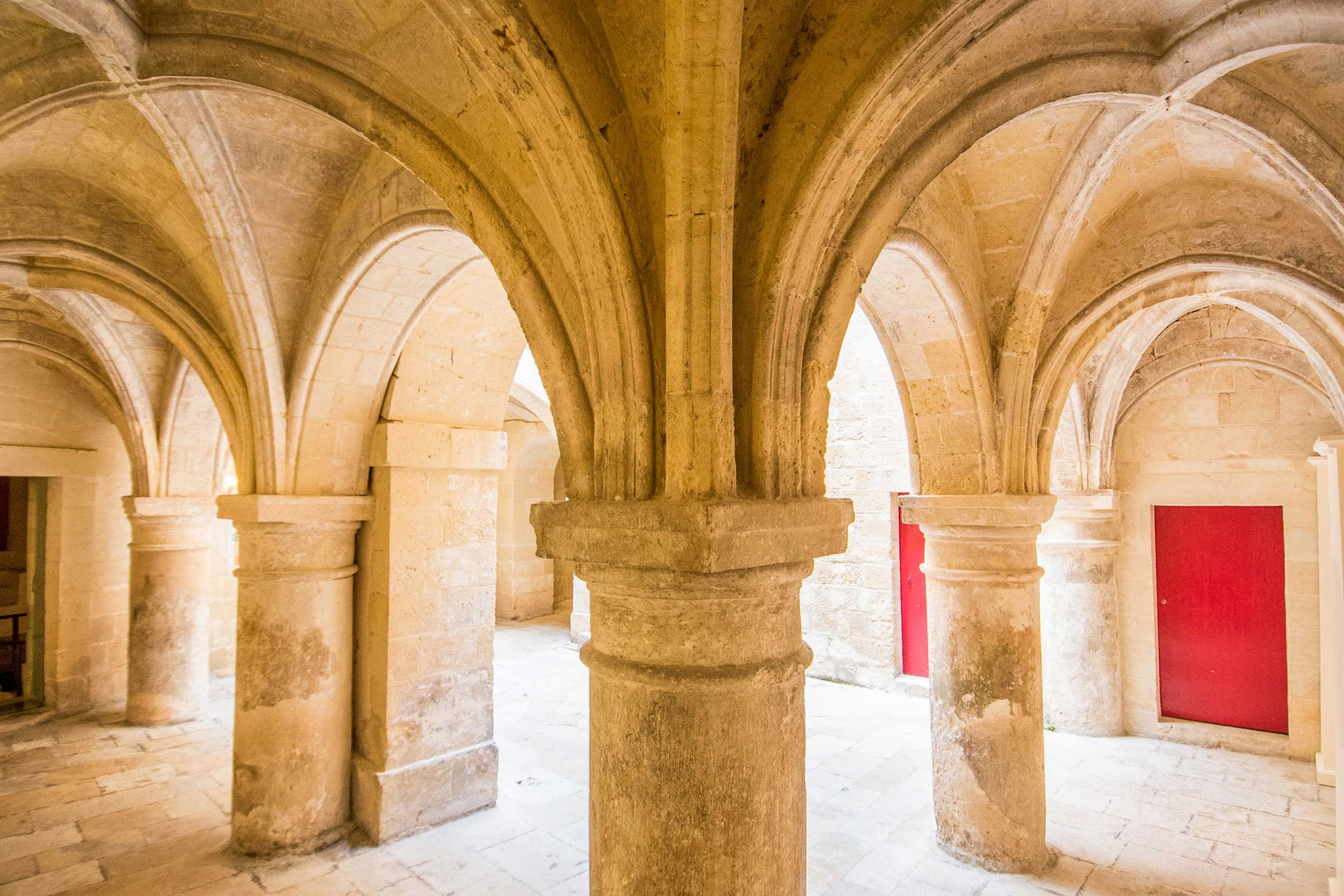Formerly the Castellania (Magna Curia Castellania Melitensis) and built in 1530, the palace served as Malta’s court under Grand Master Juan de Homedes y Coscon during the Order of St. John’s initial years in Birgu. The building’s original design is attributed to the architects Diego Perez de Malfreire and Nicolò Flavari. It remained in use as a courthouse until 1572, when a new Castellania was built in Valletta (Strada San Giacomo, now Merchant Str) after the Order of St. John moved their headquarters to the new Citta’ Umilissima, Valletta.
In 1574 it became the Inquisitor’s Palace under the name Palazzo del Sant’ Officio. Little remains of the original 16th century Castellania building due to major alterations and renovations carried out in the subsequent centuries. Between the late 16th and 18th centuries, the various inquisitors who lived and worked in the palace made a number of major alterations to the building, and it was gradually transformed into a typical Roman palazzo with some Baroque influences. The palace was enlarged with the acquisition of nearby properties, and the first major renovation began in the 1630s under inquisitor Fabio Chigi, later Pope Alexander VII. The façade was rebuilt in 1660. The 1693 earthquake significantly damaged the Inquisitor’s Palace. Follow repairs and renovation, the upper floor was possibly built in 1707. The interior was also altered and embellished throughout the 17th and 18th centuries, with the main staircase being built in 1733 to designs of Romano Carapecchia.
A small courtyard with a Gothic groin vault cloister is what remains of the original Castellania building.






The Inquisition was established in Malta in September with the first inquisitor being Pietro Dusina. Grand Master Jean de la Cassière offered the former Castellania to Dusina as his official residence, who moved in after the building was renovated. The building became the headquarters of the Inquisition, serving as both a palace for the inquisitor, the Inquisitorial court rooms and prisons.
It is now a museum under the stewardship of Heritage Malta.
From the Inquisitor’s Palace we continue to the Chapel of Our Lady of Damascus
